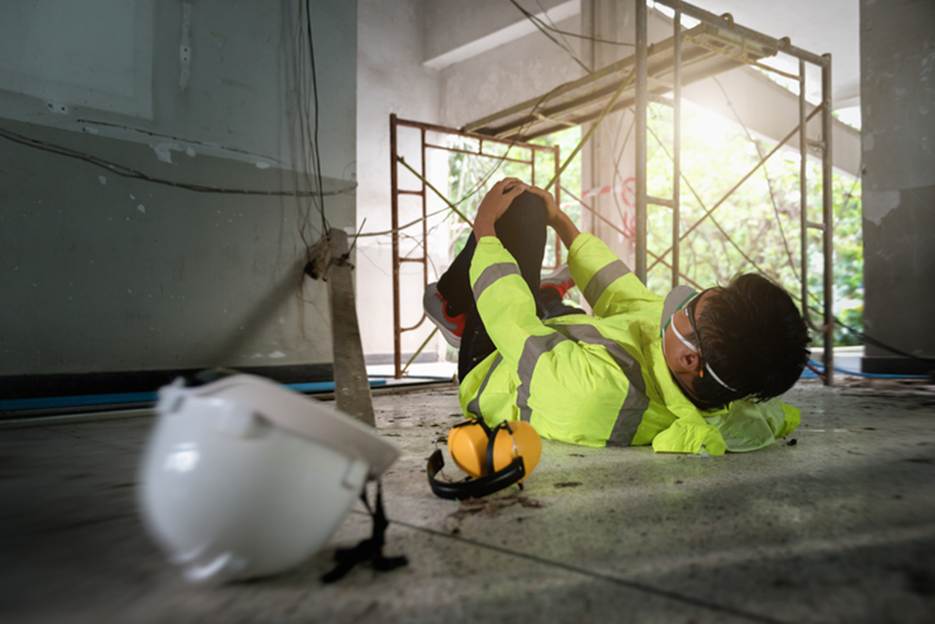
Scaffolding Accidents: Protecting Your Rights
Scaffolding Should Keep Workers Safe, Not Cause Harm
Every construction worker in New York knows what it feels like to trust the scaffold beneath their boots. You step out onto those planks, the city humming beneath you, the air colder and thinner than it feels on the street. You tell yourself the structure is solid. But sometimes, it isn’t.
We’ve seen scaffolds give way because a single piece wasn’t locked. We’ve seen painters fall when a board splintered underfoot. In those moments, everything changes. A few feet can mean a broken leg. Ten feet can mean paralysis. Twenty can mean the end.
At Horn Wright, LLP, our personal injury attorneys have stood beside injured roofers, welders, and painters from every borough, people who were just trying to earn an honest living. These falls weren’t random. They happened because someone failed to do their job.
Common Scaffolding Failures on New York Construction Sites
Walk through Midtown or the Bronx on any given weekday, and you’ll see scaffolds everywhere. They hang off high-rises, lean over brownstones, and stretch along sidewalks. They’re as common as yellow cabs. And yet, when they’re built carelessly, they become deadly.
The same issues appear again and again:
- Planks not fastened tightly enough, shifting under a worker’s boots.
- Guardrails missing or too low to catch someone if they slip.
- Old, worn-out couplers reused from another job to save a few bucks.
- Overloaded sections holding more weight than they were ever meant to carry.
- Contractors rushing to meet a deadline, skipping inspections.
You’ll hear it said that falls are part of the job. That’s a lie. They happen because safety rules are ignored. And in New York City, where every foot of airspace is a job in progress, those choices cost lives every year.

Safety Requirements Under New York’s Labor Law Section 240
New York did something few other states had the courage to do: it put worker safety above contractor profits. The Scaffold Law, officially Labor Law §240, has been saving lives for decades. It’s clear about one thing, if you put a worker in the air, you’d better give them the protection to stay there safely.
That means:
- Proper scaffolding, harnesses, slings, and guardrails.
- Equipment that’s inspected, not just installed.
- Safety devices that actually work when they’re needed.
And if that protection fails? The owner or contractor is liable, plain and simple. They can’t hide behind the excuse of “it was the worker’s fault.”
This law exists because the people at the top control the conditions on-site. Workers don’t get to pick the scaffold brand or check the bolts before climbing. When something goes wrong, it’s rarely the worker’s doing.
The same idea runs through federal law, too. OSHA’s standard 29 CFR 1926.451 requires scaffolds to hold four times their intended load and be inspected by a competent person. Still, violations happen all the time, especially on smaller sites where oversight is thin.
And when those standards are ignored, it’s the person wearing the hard hat, not the person holding the contract, who hits the ground.
Who Can Be Held Liable in Scaffolding Accidents
When a scaffold collapses, everyone on-site scrambles to point fingers. The property owner blames the contractor. The contractor blames the subcontractor. The subcontractor blames “bad materials.” By the time the dust settles, no one wants to take responsibility.
But the law doesn’t work that way. In New York, Labor Law §240 makes it clear: property owners and contractors are responsible for providing safe equipment and preventing elevation-related injuries. Even if they never touched the scaffold themselves, they’re liable if it fails.
That’s not all. Depending on what caused the collapse, others may share fault:
- A subcontractor who rushed assembly or ignored safety procedures.
- A manufacturer that sold defective parts or couplers.
- A maintenance company that skipped inspections.
And when the work is federal—like a courthouse repair or postal facility project—the Federal Tort Claims Act (FTCA) allows claims against the government. But deadlines under the FTCA are brutal. Miss them, and the case dies before it ever starts.
The bottom line? Liability isn’t about luck. It’s about who had control, who cut corners, and who made the choices that left workers hanging—literally.
Unlike Maine, New York’s Scaffold Law Offers Stronger Worker Protections
If this same accident happened in Maine, things would look very different. New York gives workers the strongest safety protections in the country, while Maine takes a much narrower approach.
In Maine:
- There’s no strict liability like New York’s Scaffold Law. You have to prove negligence, hard to do when the evidence is gone.
- Comparative fault cuts deep. If you’re even slightly responsible (over 50%), you get nothing.
- Pain and suffering damages are limited or sometimes off the table entirely.
That means a roofer injured in Brooklyn could hold a contractor accountable for missing guardrails, while a roofer injured the same way in Bangor might walk away with nothing but partial wage replacement.
It’s the difference between a state that says, “We protect our builders,” and one that quietly tells them, “You’re on your own.”
How Victims Recover Lost Wages and Medical Costs
A fall from scaffolding doesn’t just knock a person down, it can knock their entire life off track. Hospital stays, rehab, surgeries, months of lost income, it piles up fast.
Most injured workers start with workers’ compensation, which covers medical care and a portion of wages. But that’s rarely enough. You don’t get paid for pain, trauma, or the career you just lost. That’s where Labor Law §240 claims step in.
With a qualified lawyer, workers can recover for:
- All medical bills, including long-term physical therapy and medication.
- Lost wages and future earnings if they can’t return to the same trade.
- Pain, suffering, and emotional distress.
- Loss of companionship or financial support in wrongful death cases under EPTL § 5-4.1.
These laws exist because a paycheck shouldn’t disappear just because a contractor cut corners.
Many cases also uncover Labor Law §241(6) violations, specific safety code breaches that add another layer of liability. The smartest legal teams use these together to build a case strong enough to stand up against any insurance company.
Legal Pathways to Compensation for Long-Term Disability
Some scaffold injuries heal; others don’t. Spinal cord injuries, traumatic brain damage, and shattered limbs can leave a worker permanently disabled. And when that happens, it’s not enough to cover the hospital bill, you have to think long-term.
In New York, victims can pursue both workers’ comp and civil lawsuits under Labor Law. Skilled attorneys make sure these claims don’t overlap, maximizing recovery while protecting every legal right.
Long-term compensation can cover:
- Lifelong medical care, prosthetics, and mobility aids.
- Permanent disability benefits for lost earning potential.
- Retraining programs when returning to construction isn’t an option.
- Non-economic damages for pain, trauma, and reduced quality of life.
When the injury happens on a government project, lawyers may also file under the FTCA. Those cases move fast, often faster than victims expect, and require airtight documentation from day one.
Time is everything. Once a site is cleared or a scaffold rebuilt, evidence fades. Quick action keeps the case alive.
Horn Wright, LLP, Defends the Rights of Scaffolding Accident Victims
Scaffolding is supposed to lift workers up, not take them down. Yet too many companies still treat safety as an inconvenience instead of a requirement.
At Horn Wright, LLP, our personal injury attorneys have spent years fighting for construction workers who trusted unsafe scaffolds. We’ve gone after contractors who skipped inspections, owners who ignored warning signs, and insurance companies that tried to minimize suffering.
From Queens high-rises to Harlem renovations, we’ve seen every kind of scaffold failure, and we’ve helped workers rebuild after every kind of injury. You build New York. We make sure the law protects you while you do it.

What Sets Us Apart From The Rest?
Horn Wright, LLP is here to help you get the results you need with a team you can trust.
-
Client-Focused ApproachWe’re a client-centered, results-oriented firm. When you work with us, you can have confidence we’ll put your best interests at the forefront of your case – it’s that simple.
-
Creative & Innovative Solutions
No two cases are the same, and neither are their solutions. Our attorneys provide creative points of view to yield exemplary results.
-
Experienced Attorneys
We have a team of trusted and respected attorneys to ensure your case is matched with the best attorney possible.
-
Driven By Justice
The core of our legal practice is our commitment to obtaining justice for those who have been wronged and need a powerful voice.

